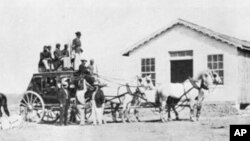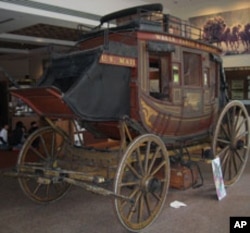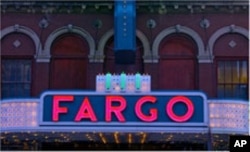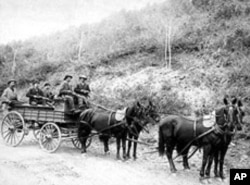One of the multi-billion-dollar financial service companies that has survived the corporate mergers of recent years is Wells Fargo Bank. It mushroomed from a regional institution based in San Francisco, California. But it got an even more thrilling start on the dusty trails of the Old West.
You often see the Wells Fargo name in western movies and television shows. It was an express company whose stagecoaches carried passengers as well as gold, silver, and strongboxes stuffed with cash - helping to open the rugged West in the process.
Wells and Fargo were two different people. Henry Wells and William Fargo helped start another, even more famous, express company - American Express, based in New York.
Fargo was also a railroad man. His Great Northern Railroad ended, at the time, in a little town that took his name: Fargo, North Dakota.
When gold was discovered in the California mountains in 1849, Wells and Fargo urged American Express to expand its operations out west. No way, said its board of directors. So the partners began a company of their own in San Francisco. It was a freight and stagecoach company with a banking arm that made loans to miners, invested in property, and succeeded beyond Wells and Fargo's wildest dreams.
Wells Fargo's rugged but beautiful Concord stagecoaches, built in New Hampshire and employed all across the country, became symbolic of the dangerous journeys across the western plains and mountains. Amazingly, in addition to heavy strongboxes and baggage, a Concord stagecoach could carry as many as 18 people, squeezed inside and up top, front and back.
During World War I, the federal government nationalized all the express companies. So Wells Fargo switched to fulltime banking.
And its wealthy directors today are no doubt glad it did. The merged bank has almost 15,000 branches. And not a single stagecoach crosses the country any more.















